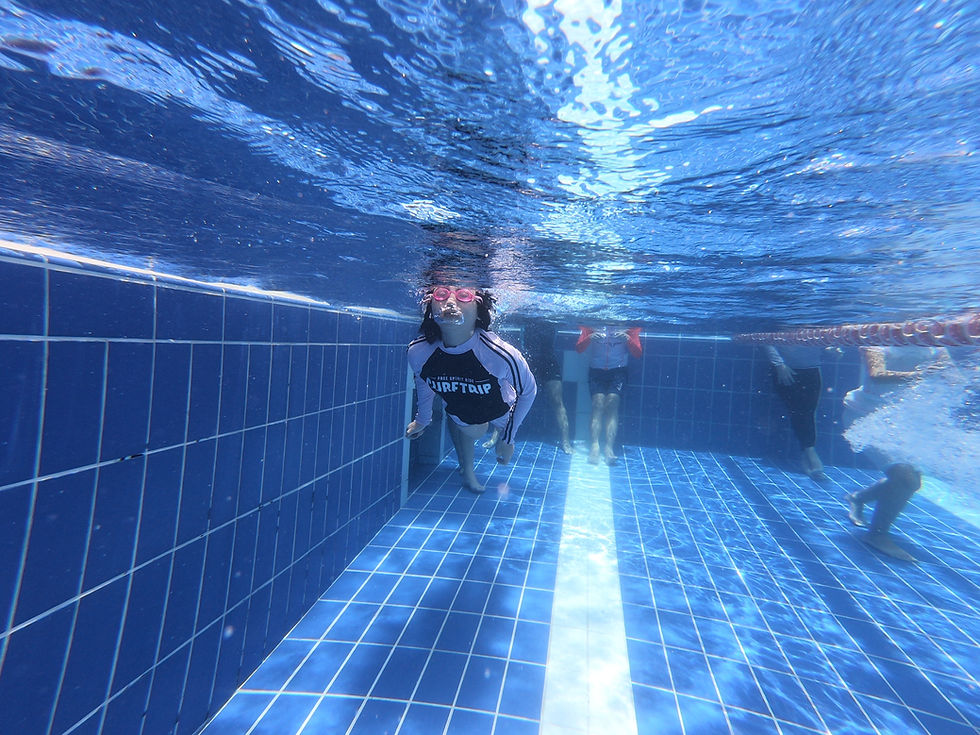How Regular Swimming Can Prevent Childhood Obesity
- SG Sink Or Swim

- Jun 21
- 3 min read

Childhood obesity is a growing health concern around the world, with long-term impacts on physical and mental well-being. One of the most effective and enjoyable ways to combat this epidemic is through regular physical activity, and swimming stands out as one of the best options. It's fun, engaging, and suitable for all fitness levels — making it an ideal exercise for children.
In this article, we explore how regular swimming can help prevent childhood obesity, and how parents, schools, and communities can encourage kids to dive into a healthier lifestyle.
🧠 Understanding Childhood Obesity
Childhood obesity occurs when a child has excess body fat that negatively affects their health. It increases the risk of:
Type 2 diabetes
Heart disease
Joint problems
Low self-esteem and depression
Future adult obesity
Contributing factors include poor diet, lack of physical activity, and excessive screen time. Daily movement is essential for maintaining a healthy weight — and swimming offers a powerful solution.
🏊♂️ Why Swimming Is Ideal for Combating Obesity
✅ Full-Body Workout
Swimming uses all major muscle groups. Every stroke — from freestyle to breaststroke — engages the arms, legs, core, and back, making it a calorie-burning, full-body activity.
✅ Low-Impact on Joints
Unlike running or jumping, swimming is gentle on the joints. For children who are overweight or new to fitness, the water supports their body, reducing stress and risk of injury.
✅ Burns Calories Effectively
A child can burn between 200–400 calories per hour in a moderate swim session, depending on age, weight, and intensity.
✅ Builds Endurance and Strength
Swimming increases cardiovascular fitness and builds lean muscle mass, helping children improve metabolism and maintain a healthy weight long-term.
✅ Encourages Consistency Through Fun
Kids are more likely to stick with activities they enjoy. Swimming is playful and social, especially when combined with games, lessons, or team practices.
📅 How Often Should Kids Swim?
To support weight management and overall fitness, health guidelines recommend:
At least 60 minutes of moderate to vigorous activity per day for children
Swimming 2–3 times per week for structured improvement
Combine swimming with other forms of play and outdoor activity for variety
💡 Tips for Parents: Making Swimming a Healthy Habit
1. Start Early
Introduce swimming at a young age to build comfort and confidence in water.
2. Make It Fun
Incorporate water games, challenges, or themed swim days to keep motivation high.
3. Set Goals
Encourage skill progression — from learning new strokes to joining a swim team.
4. Be Consistent
Make swimming a regular part of the weekly routine — just like meals or homework.
5. Lead by Example
Swim together as a family! Kids are more likely to adopt healthy habits when they see you doing the same.
🏫 The Role of Schools and Communities
Offer school-based swim programs as part of PE classes
Partner with local pools for after-school or summer swim clubs
Create inclusive swim spaces where kids of all shapes, sizes, and abilities feel welcome
🌱 The Long-Term Impact
Regular swimming not only helps prevent childhood obesity — it promotes:
Better sleep
Improved focus and academic performance
Stronger self-esteem
Lifelong love for fitness and health
The earlier children begin swimming, the more likely they are to develop positive physical and emotional habits that last into adulthood.
🏁 Final Thoughts
Swimming isn’t just a sport — it’s a lifesaving skill and a powerful tool in the fight against childhood obesity. With its combination of fun, fitness, and inclusivity, regular swimming helps children build strength, burn energy, and develop a positive relationship with exercise.
By creating opportunities for kids to swim regularly — at school, at home, or in the community — we can give them the tools to live longer, healthier lives.





Comments